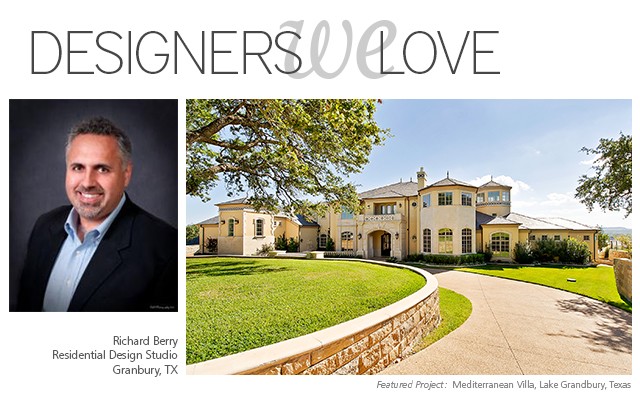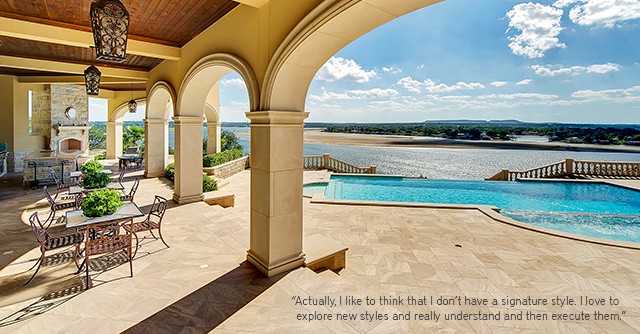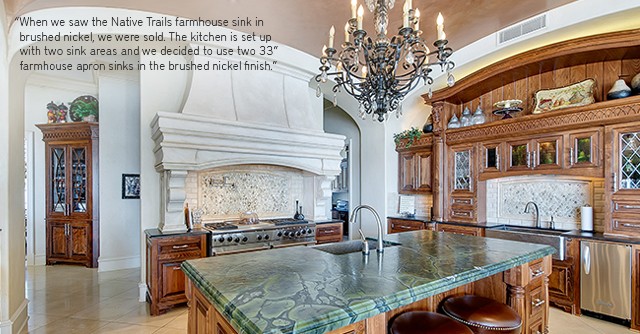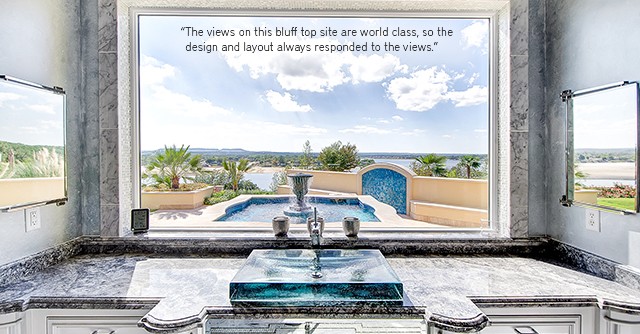Richard Berry: Unlocking each Project’s Potential

Richard Berry, the prolific founder of Residential Design Studio has shepherded everything from Georgian Revivals to Mediterranean Estates to Texas Tuscan Villas from blueprints through construction and into award-winning, awe-inspiring, real-life perfection. Berry has tackled interiors and exteriors, renovations and lake houses, estates and cottages. While explicitly reflective of his clients’ wishes, all of Berry’s projects share a natural drama. Among other talents, his knack for grounding oversized spaces, adding charm and comfort to them without robbing them of their grandeur, sets this residential designer apart.
NT: How did you know that the design and build industry was for you?
RB: I knew early on in my career that I wanted to specialize in residential design. I’ve been drawing houses and buildings since I was a child. That early passion carried through high school, college, and ultimately on to my career. In 1994, I relocated from California to Fort Worth, Texas, in search of a job. Honestly, all that I did was call the first custom homebuilder I came across in the phone book. Next thing I knew, I was offered a job. I really lucked out, even though I was making very little money. It was a job that I assumed I would keep for no more than six months while I continued to search for my dream position. I ended up being there for 10 years. After just a few years I headed up their in-house design and architecture department.
After that, I launched Residential Design Studio, a full-service architectural design firm focusing on remodels, historic renovation, and new custom home design. We transitioned quickly into being a full blown design/build firm. We generally begin with our clients with just a blank sheet of paper and continue all the way through to the move in. Our clients love this comprehensive approach to creating their dream home.
With a recent move to Arroyo Grande, California, I’ve come full circle back to the area where I attended school, at California Polytechnic State University in San Luis Obispo.

NT: What’s your signature style?
RB: Actually, I like to think that I don’t have a signature style. I love to explore new styles and really understand and then execute them.
NT: Do you have a particular philosophy on sustainability?
RB: I believe it is the responsibility of the designers and builders to lead the charge and educate our clients about sustainability.
NT: On design?
RB: My position is that there are definite right and wrong answers on each project. It is up to the designer to unlock them.
NT: We’ve admired your design philosophy and your designs ever since we came across your Lake Granbury Mediterranean Villa on Houzz. It’s a stunning residence. What was your favorite aspect of the project?
RB: It was really fulfilling to be able to design the project from raw land through completion. The homeowners were very involved in all of the selections. We worked together every day for four to five hours.
NT: What was the most challenging aspect of this project?
RB: Making a very large home truly livable is always a challenge. You really have to think through every detail. This home is over 18,000 square feet, so it’s key to carefully focus in on each aspect as you go.

NT: The kitchen is exquisite. What factors led you to selecting Native Trails copper kitchen sinks?
RB: I have used Native Trails sinks in the past and love them for several reasons. I have great faith in the design and quality of your kitchen and bath products, as they are second to none. Native Trails also has done an incredible job working with natural, sustainable products; they are crafted with such high standards, so I never have to worry about those sinks after the project has ended. For this project in particular, we wanted something completely unique in the kitchen. When we saw the Native Trails farmhouse sink in brushed nickel, we were sold. The kitchen is set up with two sink areas, and we decided to use two 33” farmhouse apron sinks in the brushed nickel finish.
NT: Was there anything unique about this project overall?
RB: I had to be extra creative and adaptable on this project because initially the exterior design style was Tuscan stone and stucco with a red clay tile roof. But once the foundation was poured, the homeowner had me change the style. On the fly, we switched to more of a South of France Mediterranean with formal cast stone, yellow-hued smooth stucco, and slate roofing.

NT: Was there any particular source of creative inspiration?
RB: The views on this bluff top site are world class, so the design and layout always responded to the views.
NT: What’s your key advice for clients?
RB: Keep it simple. Decide on a direction, but don’t forget to incorporate things you love.
Photography courtesy of Imagery Intelligence
